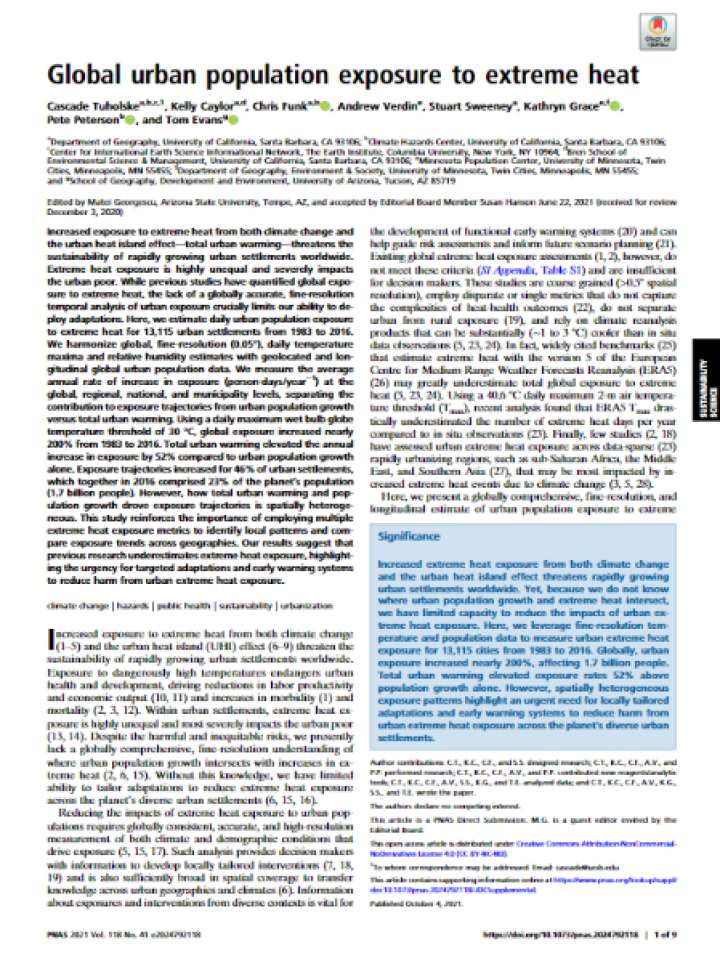Global urban population exposure to extreme heat
This study aims to present a globally comprehensive, fine-resolution, and longitudinal estimate of urban population exposure to extreme heat––referred to henceforth as exposure––for 13,115 urban settlements from 1983 to 2016. To accomplish this, the study harmonizes global, fine-grained (0.05° spatial resolution) Tmax estimates with global urban population and spatial extent data. The study looks to help plug the lack of lack of a globally comprehensive, fine-resolution understanding of where urban population growth intersects with increases in extreme heat. Without this knowledge, there is limited ability to tailor adaptations to reduce extreme heat exposure across the planet’s diverse urban settlements. Dangerously high temperatures endangers urban health and development, driving reductions in labor productivity and economic output and increases in morbidity and mortality. Moreover, within urban settlements, extreme heat exposure is highly unequal and most severely impacts the urban poor.
The study finds that global exposure increased 199% in 34 y, from 40 billion person-days in 1983 to 119 billion person-days in 2016, growing by 2.1billion person-days/yr−1. Population growth and total urban warming contributed 66% (1.5 billion person-days/yr−1) and 34% (0.7 billion person-days/yr−1) to the annual rate of increase in exposure, respectively. That is, total urban warming elevated the global annual rate of increase in exposure by 52% compared to urban population growth alone. The results indicate much exposure rates compared to recent continental-scale benchmarks. Moreover, findings suggest that increased extreme heat is potentially elevating mortality rates for many of the planet’s urban settlements, especially among those most socially and economically marginalized. Synthesizing extreme heat exposure across all individual urban settlements globally, however, reveals that exposure trajectories are composed of thousands of extreme heat events. Each of those events presents an opportunity for effective early warning, a tool that, if widely implemented, can reduce the burden extreme heat places on all urban populations.
Explore further
